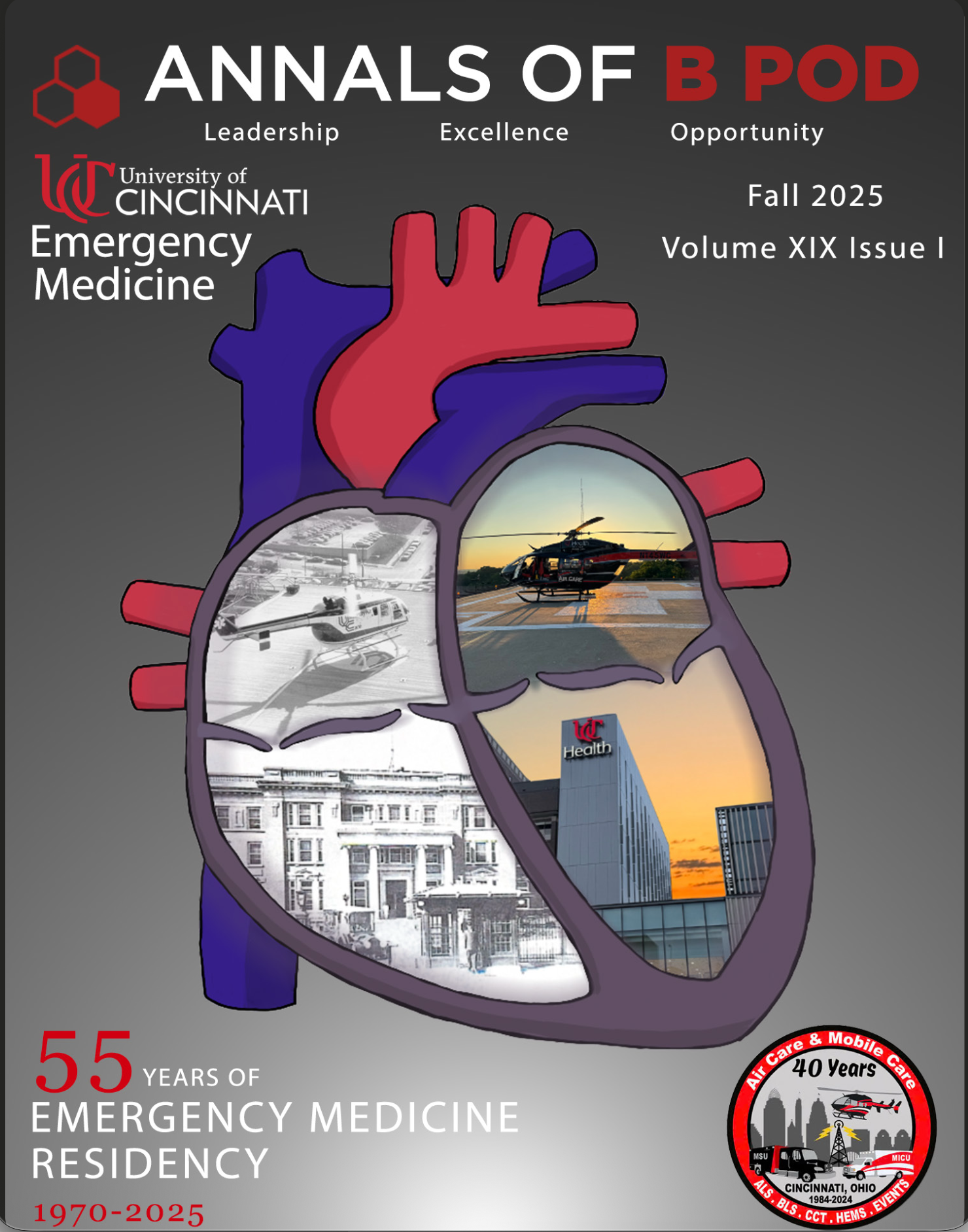
Dr. Luke Boyer
UC EM Class of 2027
Dr. Tillotson takes us on a quick tour of the classic layered ultrasound appearance of lipohemarthrosis — the bedside clue that an occult fracture is hiding in plain sight.
Ovarian emergencies are uncommon in the ED, but when they occur the consequences can be serious. Conditions like cyst rupture, torsion, and tubo‑ovarian abscess demand rapid recognition and timely management to prevent morbidity and preserve fertility. Because presentations are often variable, clinicians must keep a high index of suspicion when evaluating acute pelvic pain. Join Dr. Bannister as he discusses these critical ovarian emergencies and their management. Ectopic pregnancy will be explored in a dedicated post to highlight its unique urgency.
Tranexamic acid (TXA) is an anti-fibrinolytic that may reduce hemorrhage and improve survival in trauma. While early studies raised safety concerns, newer evidence supports its use in select patients. Join Dr. Segev as he reviews key TXA trials and highlights the updated EAST guidelines on pre-hospital and in-hospital administration.
Join Dr. Kotei for a review of an increasingly America-relevant disease but traditionally in the global health archives. For ED clinicians, a high index of suspicion is key — especially when evaluating immigrants or travelers from endemic regions, or their children.
Gastrointestinal bleeding is a frequent and potentially life-threatening presentation in the ED. With CT angiography increasingly being used as a first-line diagnostic tool, are we improving detection or simply overusing imaging? Join Dr. Guillaume as she discusses this recent JAMA Network Open study examining trends in CTA utilization for GI bleeding and whether rising scan rates are truly leading to better diagnostic yield.
Blunt thoracic trauma represents a large portion of trauma related injuries in the emergency department. Join Dr Ware as she discusses a practical approach to initial assessment using the ABCs, highlights the role of imaging (X-ray vs CT), and reviews management of common thoracic injuries.
In the ED, your words can be as powerful as your meds. In this episode, PGY-3 Dr Kotei unpacks the science of placebo and nocebo, showing how communication shapes patient outcomes—and how small shifts in framing, empathy, and reassurance can turn talk into treatment.
While esophageal injuries are relatively rare, they can be devastating if missed. Join Dr Fitz as she discusses various pathologies involving esophageal trauma, including the larger tears of Boerhaave syndrome to the mucosal lacerations of Mallory-Weiss. In the emergency department, prompt diagnosis and management can mean the difference between a full recovery and rapid decompensation, so knowledge on this low occurrence high acuity disease process is key.
Annals of B Pod is a publication with a rich history that mirrors that of our department. What started as a word document of interesting cases written by Dr. Aaron Bernard (Class of 2007) in 2003 has turned into a professional publication that allows us to learn from the unique pathology our co-residents have seen. Moreover, Annals of B Pod has instilled in us a continual curiosity about how to best care for our patients, provided a creative outlet for numerous physicians, and developed many authors into accomplished academic writers. This year marks the 55th anniversary of University of Cincinnati Emergency Medicine as well as the 40th anniversary of Air Care. In this edition of Annals of B Pod, we celebrate the physicians who paved the way for our success and whose willingness to step outside the box has propelled our specialty (and manuscript) forward. To help honor our storied program, this special edition will feature previously published AOBP articles in addition to new cases. I hope this collaboration serves as a reminder of the shared experiences that have tied generations of UCEM physicians together and how far our program has come. This publication would not have been possible without the recruitment of the brightest physicians in our field and the ingenuity they demonstrated in progressing our education.














Ectopic pregnancy represents one of the most urgent gynecologic emergencies encountered in the ED. Though relatively uncommon, the consequences can be life‑threatening if not recognized quickly. Because symptoms often mimic other causes of acute pelvic pain, clinicians must maintain a high index of suspicion to avoid delays in diagnosis. Prompt management is essential to reduce morbidity and preserve future fertility. In this second installment of ovarian emergencies, Dr. Bannister reviews the critical features of ectopic pregnancy, its diagnostic challenges, and the strategies for timely intervention.